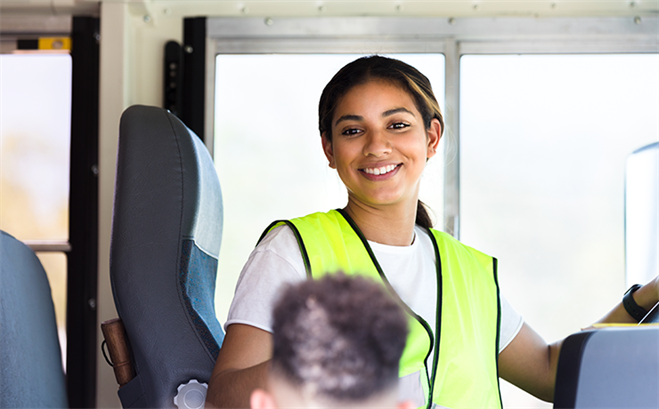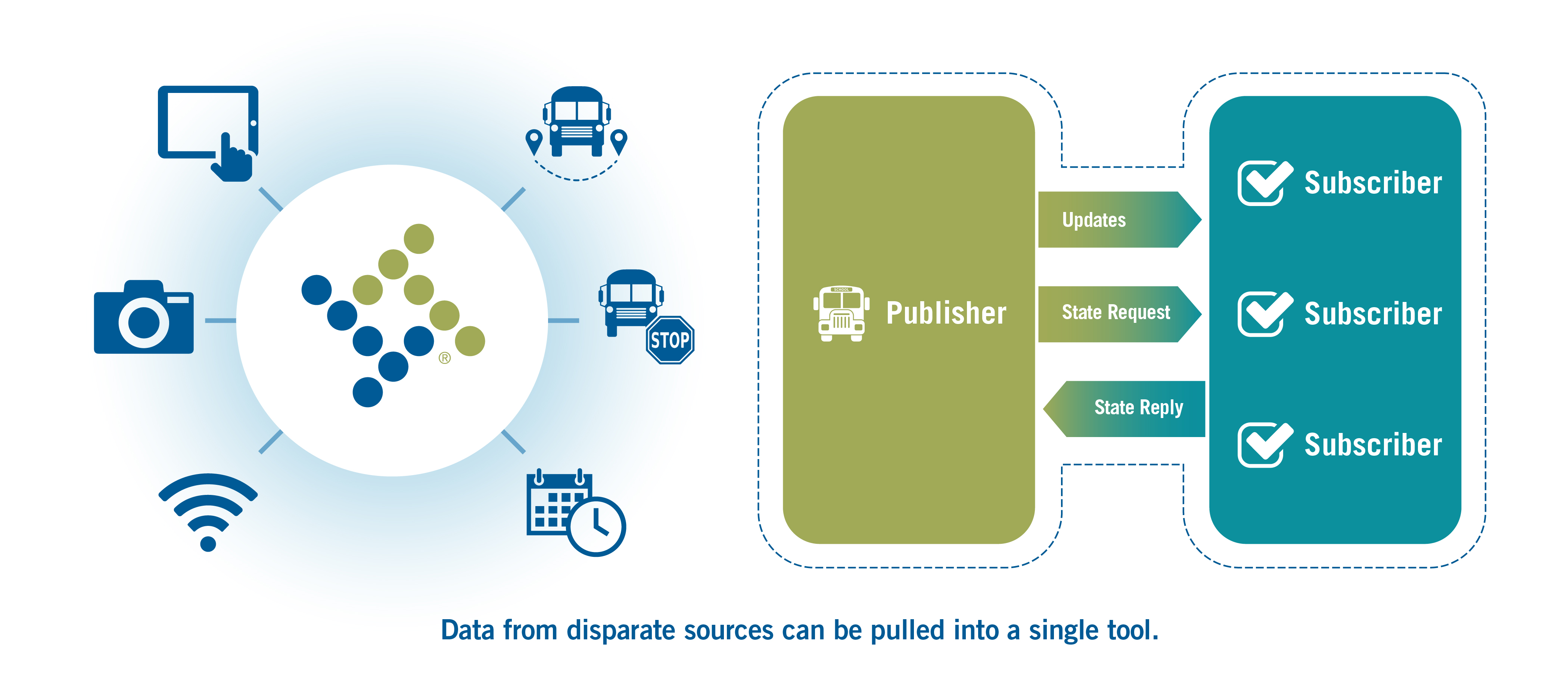An Introduction to iPaaS
August 20, 2021 by Ryan Smithson

Integration. It’s a word we’re hearing more and more as school bus technology evolves to meet current market demands. While routing software can provide some of the datapoints needed by routers, transportation directors, parents, and decision-makers, there is much more data that can be tracked on today’s school bus, and pulling it all together can be tricky.
Having partnered with school districts and contractors for more than three decades, we’ve watched these shifting needs unfold. In the 1990s, it was routing software that used an accurate GIS map. In the 2000s, it became GPS hardware to track live and historical bus movement. Then it was web-based add-ons, which evolved exponentially as the smartphone progressed in the 2010s and mobile apps became the norm. The standard quickly became fully cloud-based, Software as a Service (SaaS) solutions, plus tablet technology that offers a growing number of features and functions to support school bus drivers on the road. All of this has resulted in a wide array of technology platforms from a multitude of vendors trying to offer their piece of the pie, be it routing software, student information systems, GPS tracking, student ridership solutions, fleet maintenance applications, driver tablets, and more.
The way these solutions have evolved over the last decade — particularly the shift to the cloud — has created silos of data, some inside an organization’s walls and some outside. Access to this data by other systems can be difficult, and districts and bus contractors find themselves moving between multiple applications to get the information they need. While exporting and importing capabilities have been around for a while, relying on this kind of connection can be complex and time consuming. In the face of these challenges, a new solution is needed — one which Tyler is very proud to lead the charge in developing: the Integrated Platform as a Service (iPaaS).
Let’s look at the data needs of a common, tech-forward school district: Their student data needs to flow from a student information system to and from their online routing software (like Traversa) through a file transfer platform. Once the routes are built, the planned stop locations and times need to be married with real-time GPS data to compare planned versus actuals. But that effort is complicated by the district’s fleet, which has a mix of older and newer buses with GPS units from various companies tracking different datapoints in different ways. Some of this GPS information is also used for billing and invoicing purposes, requiring yet another data transfer to an accounting system. The district also uses tablets (like Tyler Drive) that need to extract planned routing data too — each morning as well as on the fly for last-minute changes. Student RFID scan cards (which are also utilized in the school’s lunch and library programs) need to carry bus scan information to a mobile parent app in real time. Finally, a business intelligence dashboard needs to assemble data from all these systems to provide key performance indicators for decision-makers.
And this is only a glimpse into the breadth of technology integration required behind the scenes of today’s student transportation operation. The amount of unique devices generating and using data on the bus and in the depot creates a true Internet of Things (IoT) wherein everything from cameras to stop arms to child check buzzers may lead to a new integration need.
While district IT departments have historically met these needs, the rapid escalation in the number and complexity of integrations means it is now more efficient and economical to reduce that burden on IT staff and shift it to a third-party iPaaS provider. Tyler’s recently announced integration platform, Tyler Onboard, is an iPaaS solution designed to assemble an organization's unique data into a single, cloud-based tool set. Tyler Onboard can connect various platforms whether they live on-premises, in a data center, or in the cloud (or multiple clouds). This empowers transportation leaders to bridge the silos of information between their departments. Designed specifically for school districts, our easy-to-use API platform joins K-12 transportation applications and data together to maximize the value of the data generated by the on-vehicle devices, planning software, and ever-growing list of technology solutions transportation professionals use every day. Tyler Onboard makes data aggregation simple while also ensuring your information stays secure.

Data from disparate sources can be pulled into a single tool.
The data supporting school transportation can be incredibly complex, and it doesn’t always fit together cleanly or intuitively. Of course, when your data supports the transport of the world’s most precious cargo, there is understandably little room for inaccuracies. As the technology grows more complex and nuanced, integration has become the new challenge, and we’re ready to rise to that challenge with Tyler Onboard. iPaaS platforms like Tyler Onboard are set to revolutionize how transportation departments analyze the warehouse of data being tracked every day, and in ways we’re only beginning to imagine.
If any of this is important or interesting to you, please reach out to us at transportation.solutions@tylertech.com for more information and to connect with a representative who can assist your school’s technology efforts today.